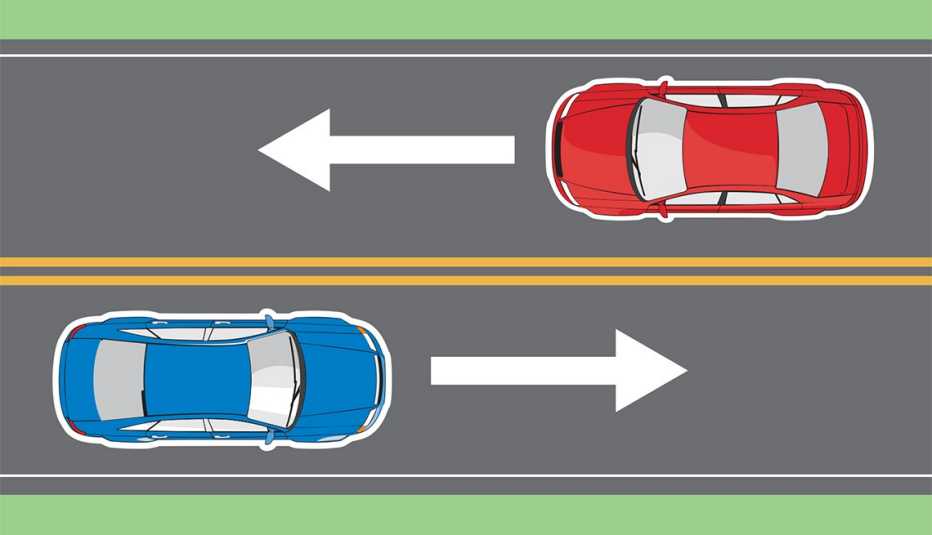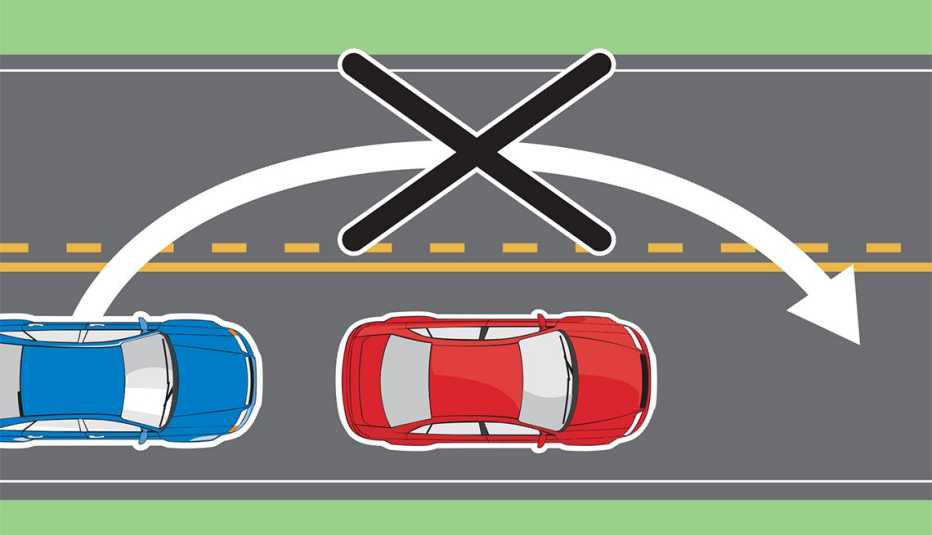AARP Hearing Center
1. Do not pass if it is not necessary. If you need to pass, be sure that the road ahead is clear.
2. Do not pass if there is a solid white or yellow line on your side of the centerline or if there are double yellow lines.
3. Check for approaching vehicles that may be close or a vehicle attempting to overtake you.
Do not pass if there is a sign indicating a no-passing zone, you are approaching a curve or top of a hill, or if you are within 100 feet of or already in an intersection.
Use the following passing process:
- Signal your intentions
- Scan your mirrors
- Check blind spots by looking over your shoulders
- Proceed with the pass
Before returning to the right lane, activate your right turn signal and check your mirror to ensure that you have adequate clearance. If your rearview mirror is properly adjusted, you should see the headlights of the car you are passing in your rearview mirror. Gradually reenter the right lane and maintain your passing speed. Turn off your turn signal.

































































More From AARP
Pavement Markings Are Key to Safety but Can Be Confusing
Changes in rules of the road explained
Traffic Signal Lights and Signs — Everything You Need to Know
Decode the messages of colors and shapes